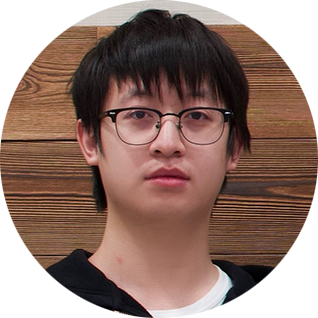CAPSTONE DESIGN PARTICIPANTS

Peter Dye

Alex Karner

Peter McAlear

Elton Tang

Morgan Ward
ButtBot
63
Cigarette butts are often littered, adding harmful chemicals to the environment. ButtBot is a small autonomous ground vehicle (AGV) capable of detecting and collecting cigarette butts. The AGV has searching, navigation, and collection abilities. The AGV includes a drivetrain system, battery system, machine vision neural net, collision avoidance system, and a vacuum collection arm. The dedicated purpose of this robot allows it to achieve a small form factor.

Tarek Abdelmeguid

Mohammad Ameen Khan

Faisal Naqaweh

Mifras Mohamed Nazeer
HoloView:
Interactive Holographic Display Platform
64
Holographic displays serve to facilitate the investigation and visualization of complex 3D models. Modern displays are expensive and lack user interaction. A high price point results in a high barrier of entry for consumers in industries such as medicine, engineering, and education, who could otherwise benefit greatly from this technology. HoloView provides an intuitive and inexpensive all-in-one solution with user interaction and multi-platform support. This will facilitate the adoption and enhance the capabilities of holographic technology in commercial, industrial, and academic applications.

Daniel Bain

Aadit Javeri

Michael Rokas

Luke Seewald

Alex Thorburn
JouleBox
65
A large amount of power is wasted when electronic devices are absent-mindedly left on or idling in standby. The objective of JouleBox is to save consumers’ money and conserve energy while introducing a degree of automation. This can be achieved by designing a smart power-bar which can monitor and control power flow to various devices, and provide users with various reports and recommendations through a graphic user interface. The JouleBox will also offer a Bluetooth based presence detection system to enable completely autonomous power control.

Lier Dong

Xiaochen Dong

Mozhang Guo

Jianliang (Oscar) Ou

Eric Phan
SmartPantry
66
In Canada 49.5 billion dollars of food is wasted annually with 20% of this loss occurring in households. SmartPantry is an application which tracks a user’s food usage and provides statistics and tools to aid users in managing their food. It leverages image recognition to catalogue food and provides recommendations on recipes and groceries personalized per user. The main advantage that SmartPantry provides is automation with image recognition and a personalized plan regarding diet and groceries.

Mitchell Dy

James Huang

Andrew Ladd

Zuhao Sheng

Bu Fan Wang

David Wang
Strayless
67
The project’s objective is to develop a platform for precise indoor location tracking leveraging Ultra-wideband technology. This will be used to improve coordination between human and robot workers, reducing collisions. Sub-meter precision is achieved using anchored beacons that communicate with moving client devices. The obtained geometric coordinates are forwarded from clients to a location processing server, which calculates the likelihood of imminent collision between two entities. These coordinates are saved to a database and accessible via API for future analysis to eliminate workplace hazards.

Mengcheng Gong

Hanqi Ou

Ziyu Zhao

Hao Zhong
Distributed Charity Management System
68
Due to the frequent phenomenon of non-profit organizations' embezzling donations, the public's trust in charities is substantially reduced. This project is to design a decentralized system that guarantees the transparency and security of the donation processes. The system achieves transactional transparency using blockchain paired with distributed computing. Cryptography is applied to guarantee the security of the system. The main advantage of this design is that it enhances charities' credibility and stimulates the public's enthusiasm for charity while being transparent and secure.
